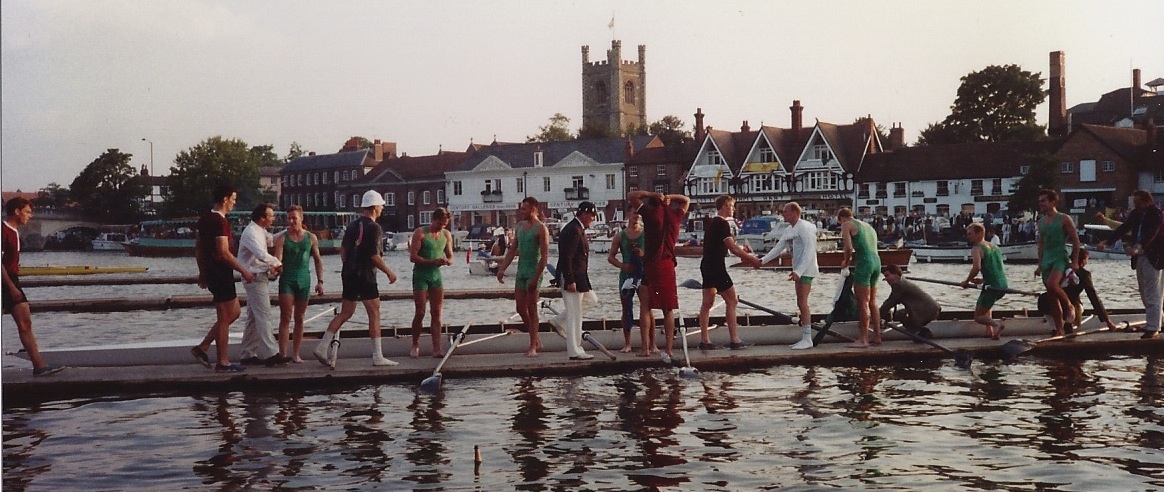First published 17 May 2011, Updated: 5 November 2012; 17 May 2014; 30 September 2020 & 10 January 2021.
The FA Cup celebrated a centenary in 2011.
The silver trophy familiar to football fans worldwide, was designed by Fattorini & Sons of 21 Kirkgate, Bradford and manufactured in Sheffield.
Tony Fattorini, a member of the Bradford branch of the Fattorini dynasty in the 1890s, was a major force in the Yorkshire city’s sporting life. He represented Manningham Rugby Club when it joined the 1895 breakaway from the Rugby Union that ultimately led to the formation of the Rugby League. In 1903, he was involved when Manningham changed codes again, dropping rugby in favour of association football to become Bradford City AFC. Also involved in athletics – he is listed as a timekeeper for athletics and gymnastics in the official report of the 1908 London Olympics – Tony emphasised the importance of fitness and stamina conditioning at the young football club. The team’s endurance played a significant role in the 1911 FA Cup run that made Bradford City the first winners of the Fattorini-designed Cup: City beat Newcastle United 1-0 in a replay at Old Trafford after a goalless draw at Crystal Palace. The Centenary of Bradford City’s FA Cup victory was celebrated with an exhibition in Bradford Museum.
Fattorini had secured the commission to create a new FA Cup through a national competition after the Football Association decided to retire the previous trophy on the grounds that its design had been pirated: even a century ago, sporting authorities had an eye on protecting their commercial rights! Fattorini had already established credentials in sport having made Rugby League’s Challenge Cup in 1897. The present day business, Thomas Fattorini Ltd, now headquartered on Regent Street in Birmingham’s Jewelry Quarter, continues to maintain the Challenge Cup to this day. Fattorini’s have also produced Lonsdale Belts [pdf] for British boxing champions since they were instigated in 1909.
This advert shows Fattorini’s two Bradford premises in the late Victorian period. The properties occupying these sites today can be seen on StreetView: 21 Kirkgate
27 Westgate:
After 80 years of wear and tear at the hands of sometimes over exuberant Cup winners, the original Fattorini FA Cup was retired after the 1991 Final. The Cup presented to winners from the 1992 Final is an exact replica of the Fattorini trophy commissioned by the FA from Toye, Kenning & Spencer. Until the mid 2010s, Toye’s London showroom on Great Queen Street was opposite the Grand Connaught Rooms built on the site of the Freemasons’ Tavern where the FA was founded at a meeting on 26 October 1863.
On the eve of the 2014 Cup Final between Arsenal & Hull City, the FA announced that silversmiths Thomas Lyte of London had crafted a third edition of the Fattorini design. Thanks to this FA video, we can learn something about the individual silversmiths – Kevin Williams, Chris Hurley and Colin Hines – and the silversmithing, chasing, polishing and plating crafts employed in creating this latest FA Cup.
The ThomasLyte website reveals that the company also cares for the Ryder Cup and the William Webb Ellis Rugby World Cup.
The Original FA Cup
First presented to the Wanderers at the Oval in 1872, the original Football Association Challenge Cup measured 18 inches tall and was made at a cost of £20 by Martin, Hall & Co at the Shrewsbury Works, 53 Broad Street, Sheffield Park. Known as the ‘the little tin idol‘, it was famously stolen on 11 September 1895 from the premises of William Shillcock, a football outfitter at 73 Newtown Road in Birmingham. It had been on public display following Aston Villa’s victory in the tournament that year and was never recovered.
Fortunately, Wolverhampton Wanderers had commissioned Birmingham silversmith, and former Aston Villa player & England international Oliver Howard Vaughton to create miniatures of the original cup to celebrate their 1893 victory. From these Vaughton was able to manufacture a replacement which was used until 1910.
This second FA Cup was subsequently presented to Lord Kinnaird in recognition of long service as FA president. It was eventually sold at auction in 2005 to David Gold, then chairman of Birmingham City FC and later co-owner of West Ham United, for $478,400. Gold loaned the Cup to the National Football Museum where it was put on public display. On 29 September 2020, Gold sold the second FA Cup at auction for £760,000 (including the auction’s buyer’s premium).
In January 2021 it was announced that the trophy had been purchased by Sheik Mansour, owner of Manchester City FC. The club had previously been presented the trophy after beating Bolton Wanderers 1-0 in the 1904 FA Cup final. This was the first major trophy win for a Manchester club. To explain the significance of that victory to the status of football and the sporting culture of Manchester, CityTV produced this documentary:
The ‘little tin idol” returned to public display at the National Football Museum at the end of COVID-19 pandemic restrictions.
The Vaughton-made cup also features in this History of the FA Cup in 11 Objects from the National Football Museum.
So the trophy presented at Wembley in 2014 became the fifth FA Cup presented to a winning finalist.
The complete list of FA Cup winners since 1872 can be found here.



